You’ve probably heard the term Search Engine Optimization (SEO). When you incorporate excellent SEO strategies, your business starts ranking higher in search engine results. Your web content poised and ready to answer the questions typed into the Google search bar brings clicks from potential customers to your website. So, how do you ensure the likelihood of this happening? One of the best ways involves the use of niche keywords placed within your valuable content.
Pro Tip: Pro tip: Long-tail keywords represent specific sub-topics within your niche.
What are Niche Keywords and Why are They Important?
A niche keyword or long-tail keyword contains three or more words specifically related to your industry. For example, if you specialize in organic candy products, “organic candy canes for Christmas” or “preservative-free naturally colored peppermints” placed in your content help attract a selected group of visitors looking exactly for what you offer.
Though a niche keyword carries less search volume than more general, large-encompassing keywords, it brings the right traffic to your site with a higher possibility of conversion.
Finding the Right Long-Tail Keywords
An essential step to start with involves determining your niche. Next, think of the most likely phrases people will type into a search bar that matches what you supply. To help with this, think about the problems your product solves for potential customers. For instance, health-conscious people don’t want their family to eat artificial colorings and preservatives during the holidays. A possible long-tail keyword might consist of a phrase such as “toxic-free sweets for the holidays.”
If you need additional help, utilizing a niche keyword finder or keyword research tool makes it easier to do.
FACT: According to recent research by WordStream, the top 10% of landing pages convert at 11.45%. The average conversion rate for long-tail keywords is 36%.
1) The Google Keyword Planner
This software is one of the most popular niche generator tools available to businesses. When entering your niche in their finder, the keyword planner provides you with keyword suggestions. It also analyzes their search volume and lets you know the competition you face using them. You can also check your long-tail keywords in this way. For example:
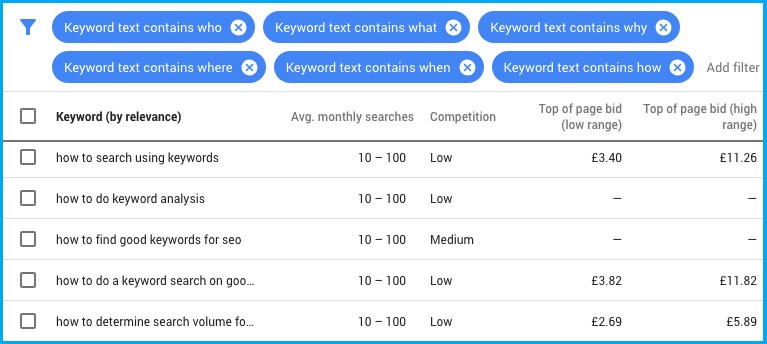
(Image Credit: Ahrefs)
Additional tools Google offers are:
Google Trends:
With this tool, you get unfiltered, anonymous samples of search requests along with their categories. The software also identifies interest in a topic around the world or as narrow as a particular city. The data covers the last seven days in real-time and up to 36 hours before your search or as far back as 2004, providing valuable insights in trends for you to consider.
Search Console:
This tool lets you view your site through the eyes of Google. That way, you can monitor and correct any problems that come to your attention. You learn when your site appears in searches, which queries land you in higher rankings and how often searchers click on your information when it does. With the knowledge you gain, you can achieve better SEO.
Google AdWords:
You Might Also Like
Once you enter words regarding your niche in this software, you get suggestions of thousands of keywords to use. It sharpens the focus more extensively with micro niche keywords. For example, instead of a long-tail phrase such as “candy with no artificial coloring”, a more precise keyword phrase becomes “organic-all-natural Christmas candy canes.”
These concise phrases narrow the query parameters down further. This software also gives you a list of web pages optimized for those phrases, the strength of the keywords and the competition. Then it suggests the niche keyword phrases with the lowest competition paired with the niche market queries that need answers and solutions. It produces a winning combination that makes it easier for you to rank on the first page of Google searches.
Google Analytics:
This popular niche finder pro tool lets you learn how many visitors come to your site and how they engage with it in real-time. Discover the demographics of your audience and which content they view. Get a closer look at how guests move around and behave once reaching your site and which queries brought them there. You gain insight about page views, time spent in each area, bounce rates, and more. Google Analytics presents this information in tables, graphs and charts.
2) WordStream
This free niche keyword finder delivers the closest and most effective related keyword blends. Just enter broad terms related to your industry, and it does the rest. The nice thing about this tool is that it gives you a broad scope of keywords with variations you may not have considered. For instance:
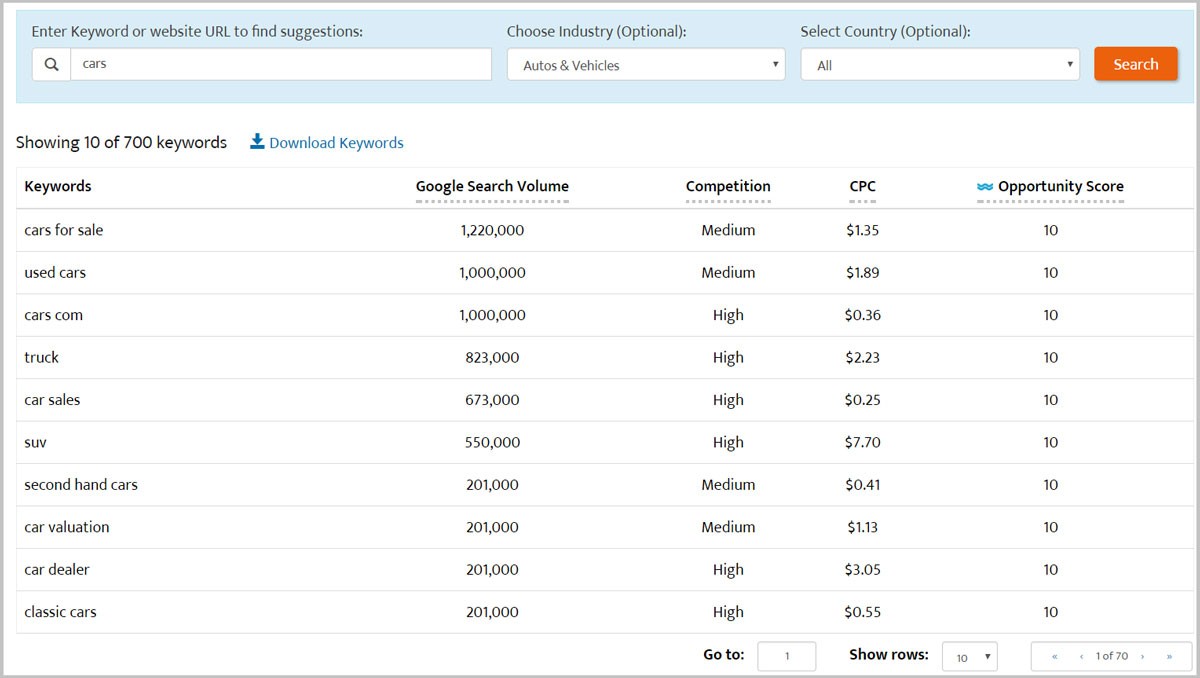
(Image Credit: WordStream)
This tool also contains an algorithm that generates an extensive list of query searches for those keywords, their volume and how competitive each phrase is. You get a clear picture of how easy or difficult ranking for each niche phrase may be. That way, you can make the best SEO decisions from the analysis.
3) Moz
You can utilize one of the largest databases available with this keyword research tool. It predicts the search volume and ranking of selected keywords in result pages with 95% accuracy. Its thorough rating allows you to focus on the keywords best suitable for your business.
You can easily export all the targeted long-tail phrase recommendations, along with the metric analysis spreadsheet. With knowledge of why pages rank where they do, you better choose which long-tails you use. Here is what the Moz keyword tool looks like:
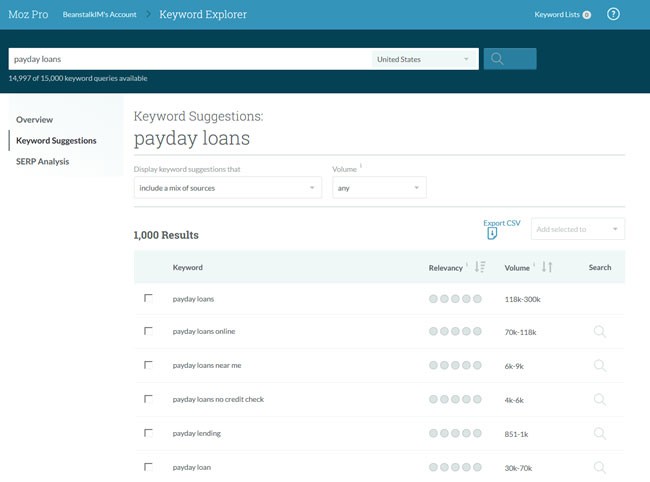
(Image Credit: Beanstalk Internet Marketing)
4) SEMrush:
This niche generator software suite earns the trust of marketers around the globe. If you have limited SEO experience, you may especially appreciate this all-in-one tool. Like other tools mentioned, this keyword planner identifies long-tail phrases most suitable for your niche. It also audits your site so that you gain clarity on how to optimize your pages for lead generation. For example:
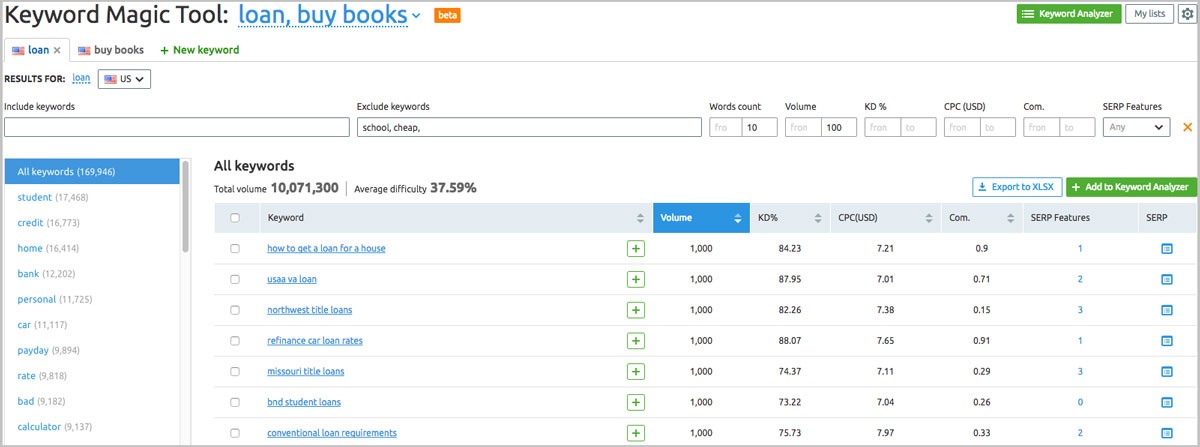
(Image Credit: SEMrush)
Additionally, it tracks keyword strategies of your competitors and how they rank so you can use the critical information to better your game plan. Furthermore, you get a source of backlinking opportunities and learn about trends that happen in your niche to keep you well-informed.
Improve your content marketing + SEO in 60 seconds!
Diib uses the power of big data to help you quickly and easily increase your traffic and rankings. We’ll even let you know if you already deserve to rank higher for certain keywords.
- Easy-to-use automated SEO tool
- Get new content ideas and review existing content
- Checks for content localization
- SEO optimized content
- Built-in benchmarking and competitor analysis
- Over 500,000k global members
Used by over 500k companies and organizations:
Syncs with 
5) Ubersuggest:
With this free keyword tool, you receive hundreds of suggestions of long-tail phrases in your niche. You also find out what’s working for your competitors and which content gets the most shares and backlinks. Then you can hone in on the highest interest of readers revealed. Additionally, you become aware of the latest trends for niche words.
Furthermore, this tool lists low to no search volume phrases. These long-tail words indicate searches made involving the keywords listed but with insufficient data existing to answer those queries. It provides an exciting opportunity for you to fill that void and potentially get many visitors to your website. The image below shows a good example of Ubersuggest:
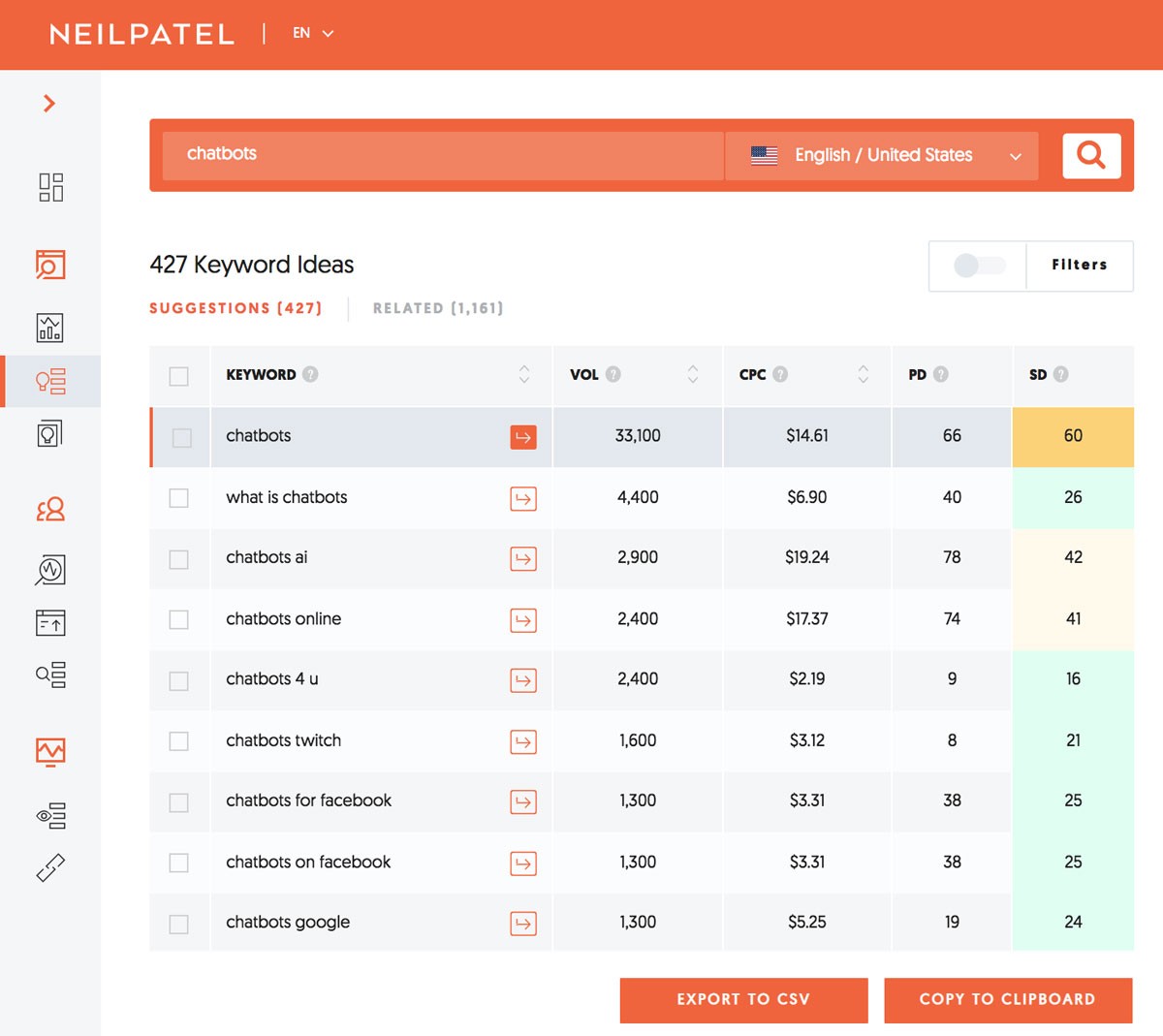
(Image Credit: Insightland)
6) AnswerThePublic:
This tool detects long-tail words by scanning questions that people have already asked involving your niche. You can use this information to create a blog post or web content that provides the answers to those queries. Just type in your niche phrases, and the software gives you a diagram that displays all the online searches related to it. You also have the benefit of checking the articles published on the subject to ascertain what competition you face. Take a look at this unique keyword tool below:
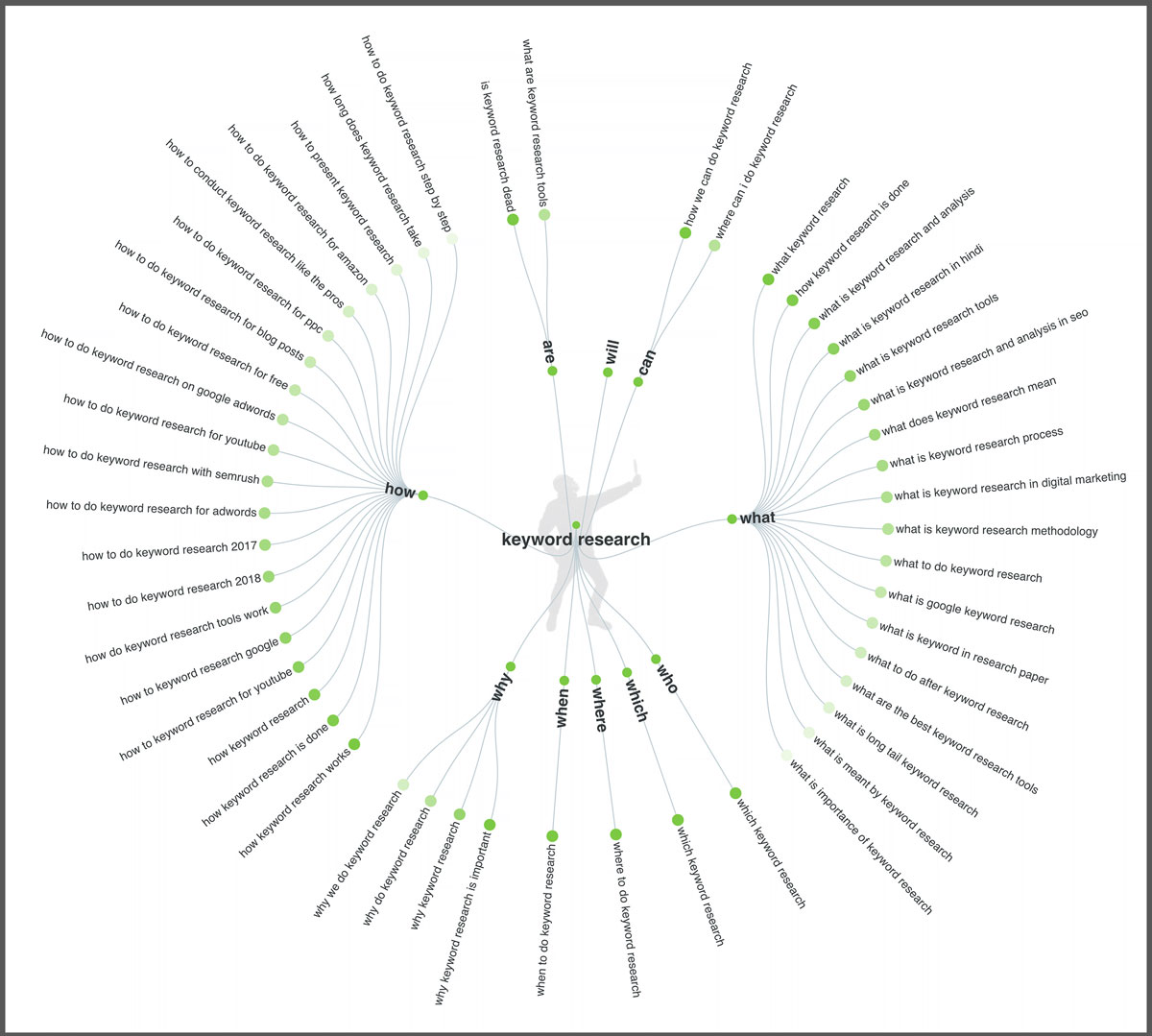
(Image Credit: Backlinko)
7) FB Search
Facebook is one of the most popular social media sites used by businesses. Finding a niche becomes a lot easier by exploring Facebook pages. FBSearch tool provides an fb niche finder to sharpen your focus. Type your keywords, and you receive a listing of niches connected to those keywords with popular posts and events of competitors. For example, if you type in “Keyword Research Tools” this pops up:
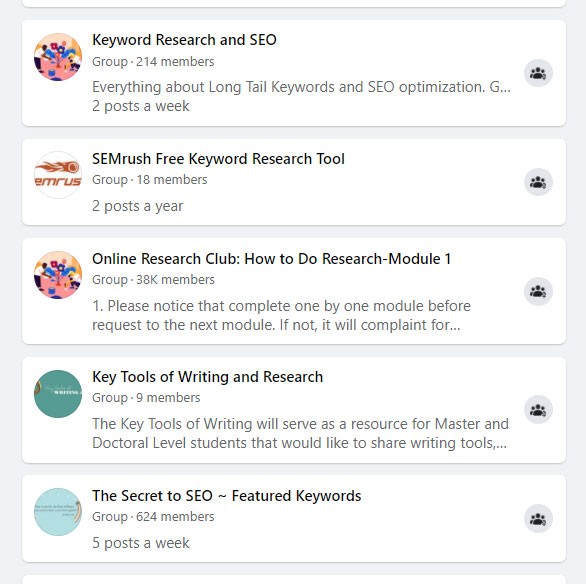
Follow these businesses so that they show up in your feed. That way, you can keep track of what works for them and generate ideas that put you a step ahead. Perhaps you offer something additional that they do not. Using an fb niche finder gives you information on trending advertisements, videos, photos and posts on Facebook that come in handy when determining your business marketing strategy.
How Do You Use Long-Tail Keywords Effectively in Your Content?
First and foremost, you need content that answers questions potential customers ask. Your web pages should provide solutions for problems future clients need solving. Having a blog section on your site increases your ability to use a wide variety of niche and micro niche keywords as you cover new topics related to what you offer.
Doing this helps you get noticed in algorithms as an authority in your clearly defined niche. Write natural-sounding, easy-to-digest content that offers valuable information, and you increase your chances of moving up in ranking.
Knowing your competition puts you in a better position to use your high-quality keywords more effectively, as well. Your competitors may have discovered keywords that bring traffic from your target audience to their website. By researching what they do, you compare and adjust your choices. You can see how your keywords differ and change them accordingly. The business marketing world calls this “piggybacking” on your competitor’s keywords.
By understanding the relevant keyword trends in your niche and choosing your specific keywords carefully, you can blend this knowledge with content that resonates with your audience. Incorporate your selected keyword phrases throughout your web pages. In this way, you improve SEO and stay one step ahead of your competitors.
We hope that you found this article useful.
If you want to know more interesting about your site health, get personal recommendations and alerts, scan your website by Diib. It only takes 60 seconds.
Strategically Place Micro Niche Keywords in These Six Places
- URLs:
The URL that shows up in the top bar after a click should be relevant to what the searcher finds on your site. Having a niche keyword or two in a URL proves crucial for search engines to find your content, as well. Both the user and algorithms appreciate informative and concise URLs. If what you insert there doesn’t match what you offer, expect high bounce-rates and lower ranking.
- Title tags:
Search engines rely on title tags when discerning what the topic of your page covers. Browsers tab and bookmark descriptions using titles. That’s why it’s imperative to put your carefully selected keywords within your title. It’s best to get them as close to the beginning as possible. Title tags should be no more than 55-60 characters for the best results. Google cuts your title short, if any longer anyway, making it weaker.
- Meta descriptions:
Though meta descriptions are not a factor in ranking for search engines, they still carry considerable weight for optimal SEO. The algorithms use meta descriptions with title tags to create a search snippet, a written excerpt from your webpage placed under your title in a search result listing that motivates people to click on it for more information. For example:

(Image Credit: Reliablesoft)
Meta descriptions provide an opportunity to advertise your content. The more click-rates you receive, the more search engines notice you, which means higher ranking. Once again, make sure your description matches the content they want when clicking on it. Meta descriptions should be 155 to 160 characters in length.
- Page content:
Your pages of content represent the foundation of your site and give you the ability to utilize keywords on a larger scale. However, over-stuffing writing with an overabundance of keywords is frowned upon by algorithms. Since Google’s Panda update, search engines view saturated use of keywords as spam. It can push you lower in ranking as a penalty.
The best approach is to use micro-niche phrases naturally as a logical part of your content. Have you read an article that uses the same words over and over again ad nauseam? Not only will people leave your site, but they’ll also never come back. The most valuable information for your audience exists in your content pages.
Cover your topic in-depth. Answer questions visitors seek promised to them in the title and meta description. If you select appropriate keywords, they become easy to incorporate without disrupting the flow of writing. Google likes articles around the 2,000-3000 word range since they provide more value at that length.
FACT: 60% of marketers say that inbound (SEO, blog content, etc) is their highest quality source of leads. (HubSpot)
- Headings and subheadings:
Just as with titles, search engines focus on the headings and subheadings in your content. That makes them a desirable place to include keywords. It gives algorithms clues about what your writing provides searchers. Make sure to use a niche keyword in heading one on your page. It serves as a banner alerting search engines of what the content covers.
Your heading one tag is not the same as your title tag, so be sure to include them on every page. However, make them close in wording to the title tag. Don’t overdo the use of keywords in subsequent headings, but do utilize as many as seems natural.
Headings make digesting words on the page much easier by dividing content into smaller sections. Your readers have a more enjoyable experience, and that keeps them on your site longer. Search engines consider bounce-rates when determining a site’s value and ranking. No character limits apply to headings and subheadings, but keeping them around 70 characters looks more aesthetic on the page.
- Image Alt Text:
Did you know that search engines become blind when scanning images? Crawlers have no idea how to categorize images unless you give them text referred to as alt text. Put niche phrases in the alt text to help bots determine the relevancy of your content further. If your picture doesn’t match the keywords you use, change it to one that does.
The method of adding alt text to your images depends on the hosting of your website. For example, on WordPress, you click the photo in your content, and it provides a window to enter and save alt text about your image. In other cases, you may have to enter the HTML alt parameter yourself. Be descriptive yet concise, though no limit in characters exists.
Diib: Find Your Niche Keywords Today!
By employing a niche finder pro or keyword tool to generate more specific long-tail ones, you get the resources you need to optimize your website better. In turn, you receive more traffic and a higher ranking in search results. Diib Keyword Research Tool allows you to find your niche and long-tail keywords simply. Additionally, you’ll have the unique opportunity to view the niche keywords of your top 6 competitors. Here are some of the features of our Diib User Dashboard you’re sure to love:
- Keyword, backlink, and indexing monitoring and tracking tools
- User experience and mobile speed optimization
- Bounce rate monitoring and repair
- Social media integration and performance
- Broken pages where you have backlinks (404 checker)
- Technical SEO monitoring, niche keywords included
Click here for your free scan or simply call 800-303-3510 to speak to one of our growth experts.
FAQ’s
Very specific long-tail keywords that fit into a certain industry are considered niche keywords. It is very important to utilize long-tail niche keywords and not just the broad, popular keywords because those aren’t very easy to rank for.
The first thing you need to do to find the right keywords is to think like the customer. What are some things you as a customer would search on the internet? Second, figure out who your competitors are and study them. Next, learn about long-tail keywords and use them. Finally, use keyword research tools to help find the right keywords and use them.
To find the niche keyword for your business or organization you need to:
- Figure out your niche. Your niche is what product or idea you want to sell.
- Use keyword research tools to search for keyword ideas.
- Analyze the keyword results and decide which ones will fit your niche the best.
- Make sure to monitor your niche keywords and adapt them if necessary.
SEO keywords are the ideas and topics that you are writing about in your content. The words and/or questions consumers search for in a search engine or “search queries” are also considered keywords.
Here are five examples of a few of the best blogging niches:
- Food is an excellent blogging niche. Everybody has to eat and there are a lot of people out there looking for recipes.
- Lifestyle is an easy blogging niche because it encompases many different topics.
- Fashion blogging is a great choice because the fashion industry is always changing and people need to talk about it.
- Personal Finance is another good choice for a blogging niche. There are many people out there who need financial advice and are actively looking for it.
- Believe it or not blogging is another blogging niche. Many businesses are trying to start a blog and don’t know where to start, that’s where you come in.



